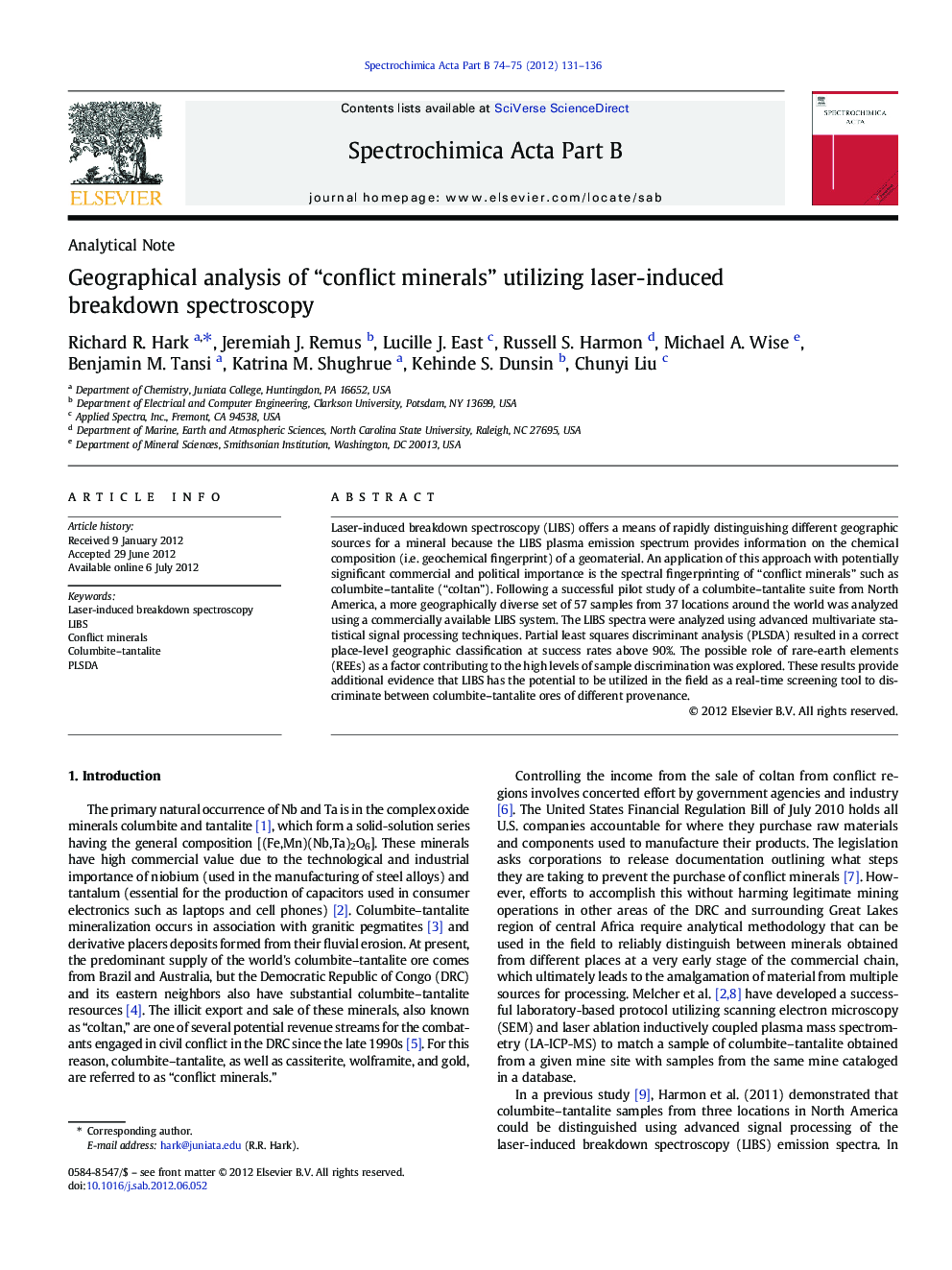| Article ID | Journal | Published Year | Pages | File Type |
|---|---|---|---|---|
| 1240348 | Spectrochimica Acta Part B: Atomic Spectroscopy | 2012 | 6 Pages |
Laser-induced breakdown spectroscopy (LIBS) offers a means of rapidly distinguishing different geographic sources for a mineral because the LIBS plasma emission spectrum provides information on the chemical composition (i.e. geochemical fingerprint) of a geomaterial. An application of this approach with potentially significant commercial and political importance is the spectral fingerprinting of “conflict minerals” such as columbite–tantalite (“coltan”). Following a successful pilot study of a columbite–tantalite suite from North America, a more geographically diverse set of 57 samples from 37 locations around the world was analyzed using a commercially available LIBS system. The LIBS spectra were analyzed using advanced multivariate statistical signal processing techniques. Partial least squares discriminant analysis (PLSDA) resulted in a correct place-level geographic classification at success rates above 90%. The possible role of rare-earth elements (REEs) as a factor contributing to the high levels of sample discrimination was explored. These results provide additional evidence that LIBS has the potential to be utilized in the field as a real-time screening tool to discriminate between columbite–tantalite ores of different provenance.
► Analysis of columbite–tantalite using laser-induced breakdown spectroscopy (LIBS) ► Chemometric analysis (PLSDA) affords 90–100% correct sample classification. ► Possible role of rare-earth elements in the high level of sample discrimination
